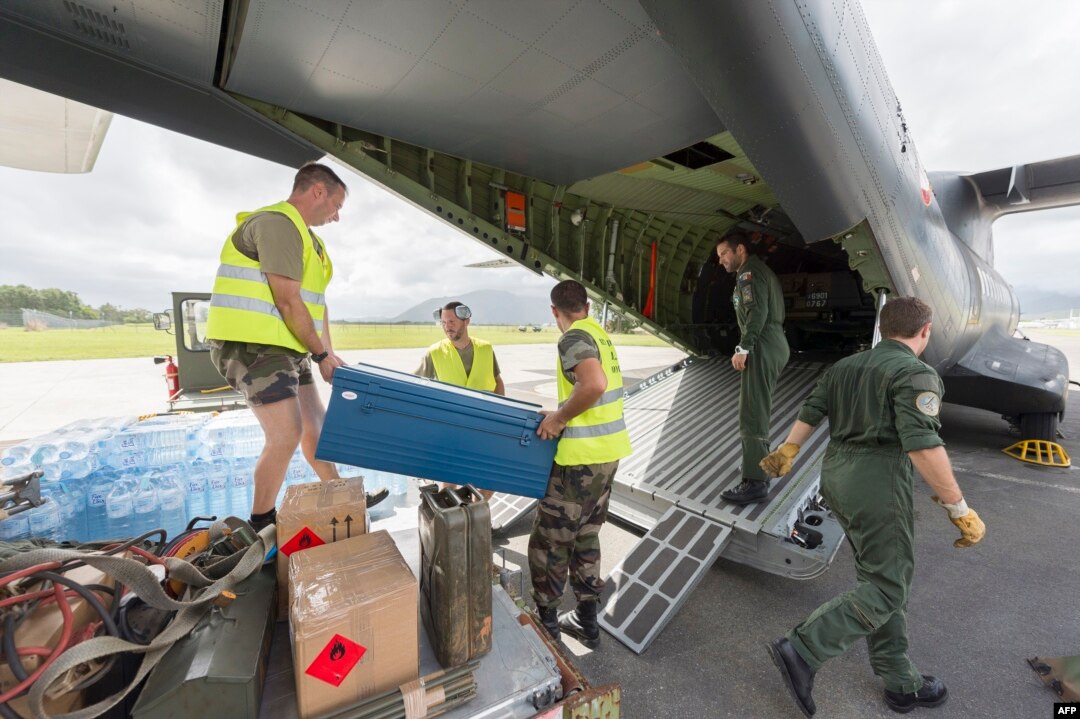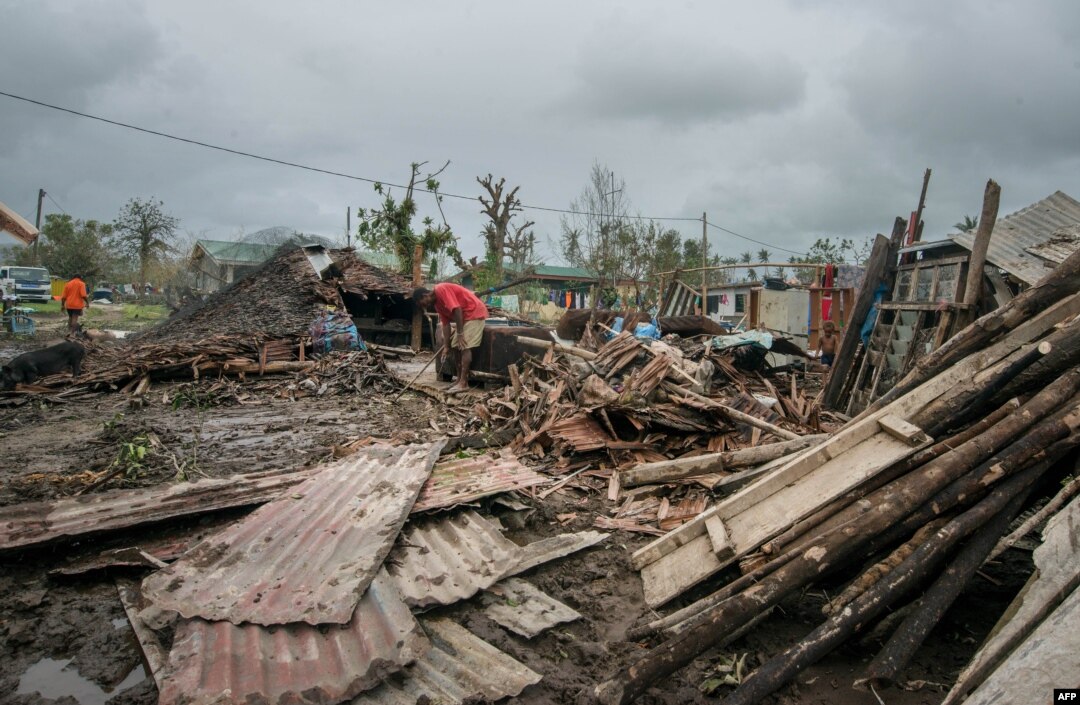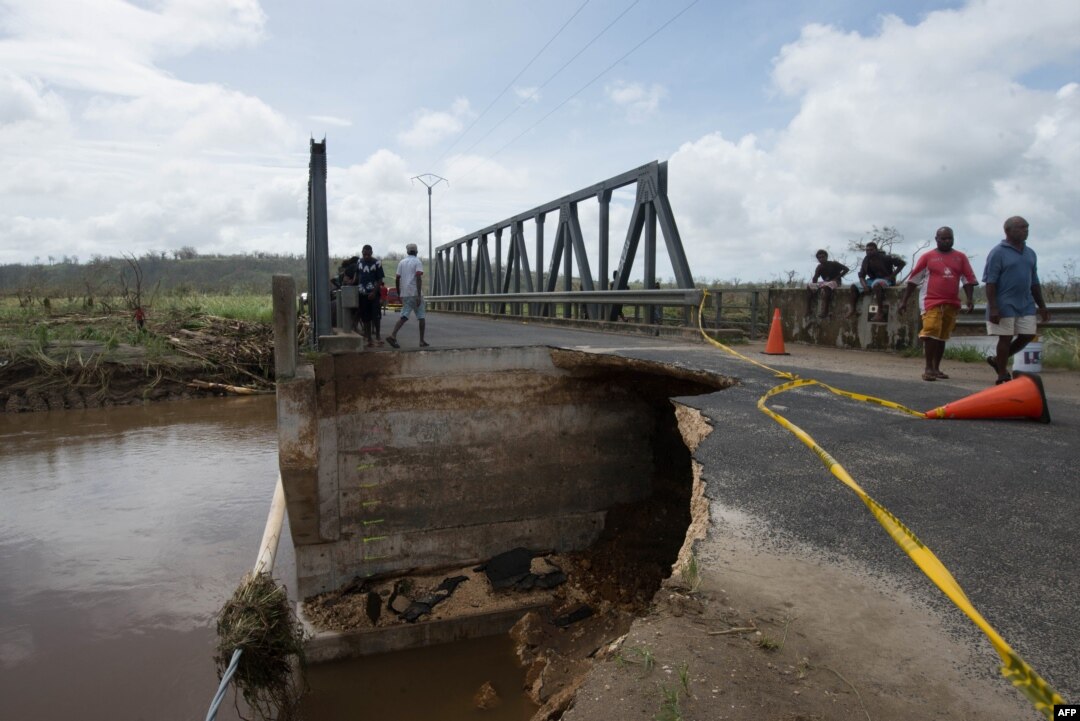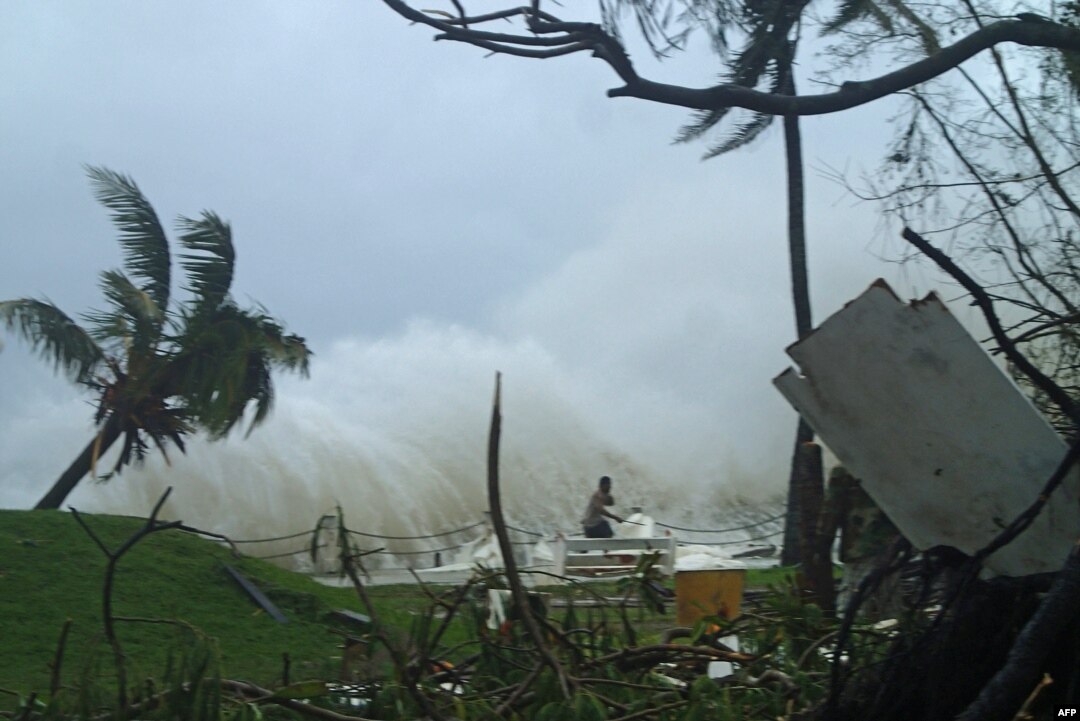Aid Teams Arrive in Vanuatu After Devastating Cyclone

Water bottles and other relief are loaded into a French Army logistical transport plane bound for Vanuatu, at the Aerial Military Base Lieutenant Paul Klein (formerly known as La Tontouta), north of Noumea, New Caledonia, March 15, 2015.

This handout photo taken and received on March 15, 2015 by UNICEF Pacific shows scattered debris outside local homes after the area was badly damaged by Cyclone Pam, outside the Vanuatu capital of Port Vila.

This handout photo taken and received on March 15, 2015 by UNICEF Pacific shows damage to a bridge, caused by Cyclone Pam, outside Port Vila.

This handout photo received on March 15 by CARE Australia shows a man running away from high waves caused by Cyclone Pam crashing along the coast in Port Vila.
This handout photo taken and received on March 14, 2015 by UNICEF Pacific shows storm damage to boats caused by Cyclone Pam, in the Vanuatu capital of Port Vila.
This handout photo taken and received on March 15, 2015 by UNICEF Pacific shows a resident's home badly damaged by Cyclone Pam, outside the Vanuatu capital of Port Vila.
This handout photo taken and received on March 14, 2015 by UNICEF Pacific shows waves and scattered debris along the coast, caused by Cyclone Pam, in the Vanuatu capital of Port Vila.
Cyclone Pam was heading in a southwesterly direction when the Moderate Resolution Imaging Spectroradiometer (MODIS) on NASA’s Aqua satellite acquired this image at 1:30 p.m. local time (2:20 Universal Time) on March 13, 2015. Not long after the image was acquired, the storm struck the island of Efate, which is home to Vanuatu’s capital city, Port Vila.

